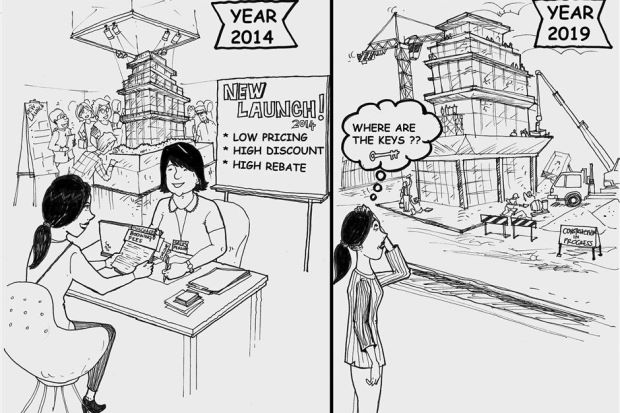HAVE you ever grabbed an offer without any hesitation, simply because the price is too cheap to resist?
Many of us have this experience especially during sales or promotional campaigns. We tend to spend more at the end or buy things which we are uncertain of their quality when the deal seems too good to say no.
It may be harmless if the amount involved is insignificant. However, when we apply the same approach to big ticket items, it can cause vast implications.
Recently, I heard a case which reinforces this belief.
A friend shared that a property project which was selling for RM300,000 a few years ago is now stuck. Although the whole project was sold out, the developer has problem delivering the units on time.
The developer is calling all purchasers to renegotiate the liquidated and ascertained damages (LAD), a compensation for late delivery.
One of the homeowners said he is owed RM50,000 of LAD, which means the project is 1½ years late. When we chatted, we found that he purchased the unit solely due to its cheap pricing without doing much research in the first place.
The incident is a real-life example of paying too low for an item which can leave us as losers, especially when it involves huge sum of investment, such as property.
To many, buying a house maybe a once-in-a-lifetime experience, a decision made can make or break the happiness of a family.
A good decision ensures a roof over the head and a great living environment, while an imprudent move may incur long-term financial woes if the house is left uncompleted.
Nowadays, it is common to see people do research when they plan to buy a phone, household item, or other smaller ticket items.
Looking at the amount involved and implication of buying a house, we should apply the same discretion if not more.
It is always important for house buyers to study the background of a developer and project, consult experienced homeowners regarding the good and bad of a project before committing.
I have seen many people buy a house merely based on price consideration.
In fact, there are more to be deliberated when we commit for a roof over our heads. The location, project type, reputation of a developer, the workmanship, the future maintenance of the property etc, are all important factors for a good decision as they would affect the future value of a project.
Beware when a discount or a rebate sounds too good to be true, it may be just too good to be true and never materialised. If the collection or revenue of a housing project is not sufficient to fund the building cost, the developer may not be able to complete the project or deliver the house as per promised terms. At the end of the day, the “price” paid by homeowners would be far more expensive.
In general, the same principle applies elsewhere. It is a known fact that when we pay a premium for a quality product from a reliable producer, we have a peace of mind that the product could last longer and end up saving us money. Some lucky ones will end up gaining much more.
For instance, when we purchase a car, we should consider its resale value as some cars hold up well, while others collapse after a short period. Other determining factors include the specifications of the car, the after sales service, and the availability of spare parts.
Quality products always come with a higher price tag due to the research, effort, materials and services involved.
In addition to buying a house or big ticket items, other incidents that can tantamount to losing huge sums are like money games, get-rich-quick scheme, or the purchase of stolen cars or houses with caveats.
When an offer or a rebate sounds dodgy, the “good deal” can be a scam.
Years of experience tells me that when what is too good to be true, we should think twice. I always remind myself with a quote from John Ruskin (1819-1900) who was an art critic, an artist, an architect and a philosopher. “It’s unwise to pay too much, but it’s worse to pay too little. When you pay too much, you lose a little money – that’s all. When you pay too little, you sometimes lose everything, because the thing you bought was incapable of doing the thing it was bought to do.
“The common law of business balance prohibits paying a little and getting a lot – it can’t be done. If you deal with the lowest bidder, it is well to add something for the risk you run, and if you do that you will have enough to pay for something better.”
 Food for thought by Alan Tong
Food for thought by Alan TongDatuk Alan Tong has over 50 years of experience in property development. He was the world president of FIABCI International for 2005/2006 and awarded the Property Man of the Year 2010 at FIABCI Malaysia Property Award. He is also the group chairman of Bukit Kiara Properties. For feedback, please email feedback@fiabci-asiapacific.com.
Related posts:









